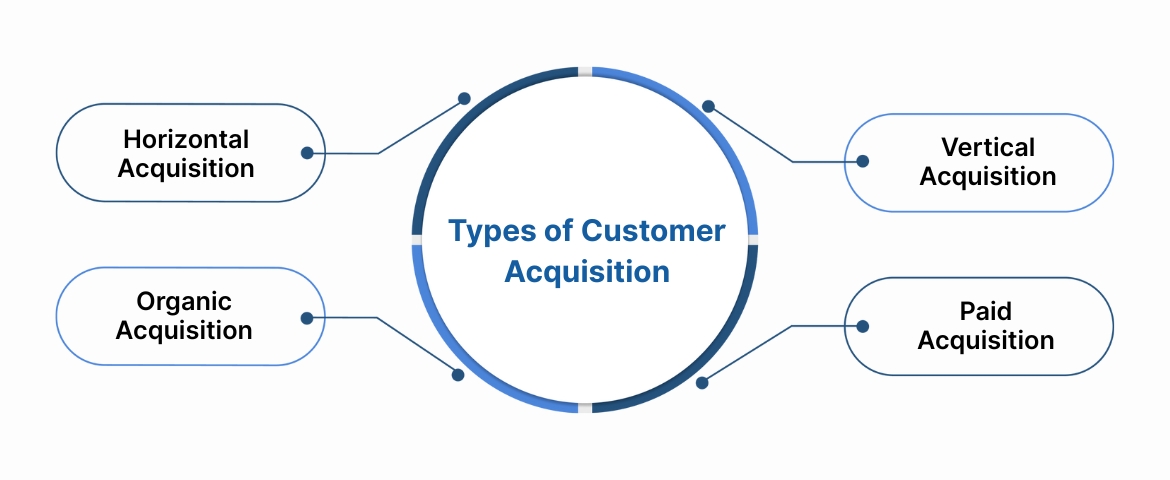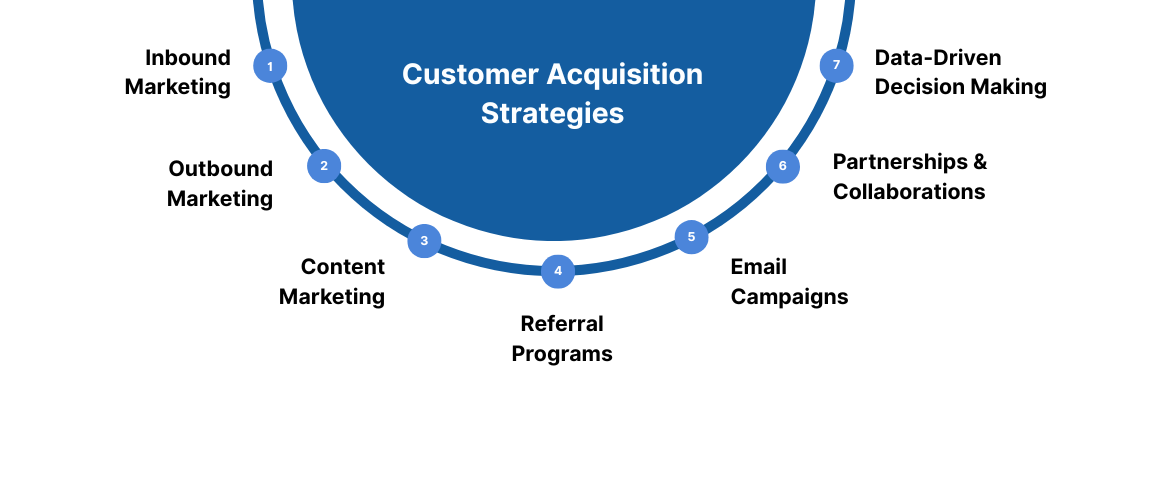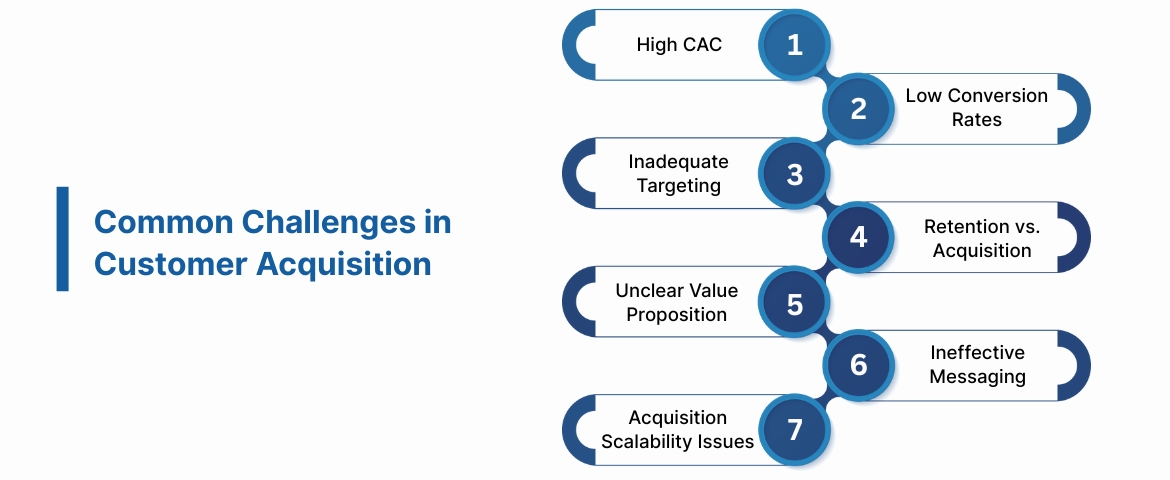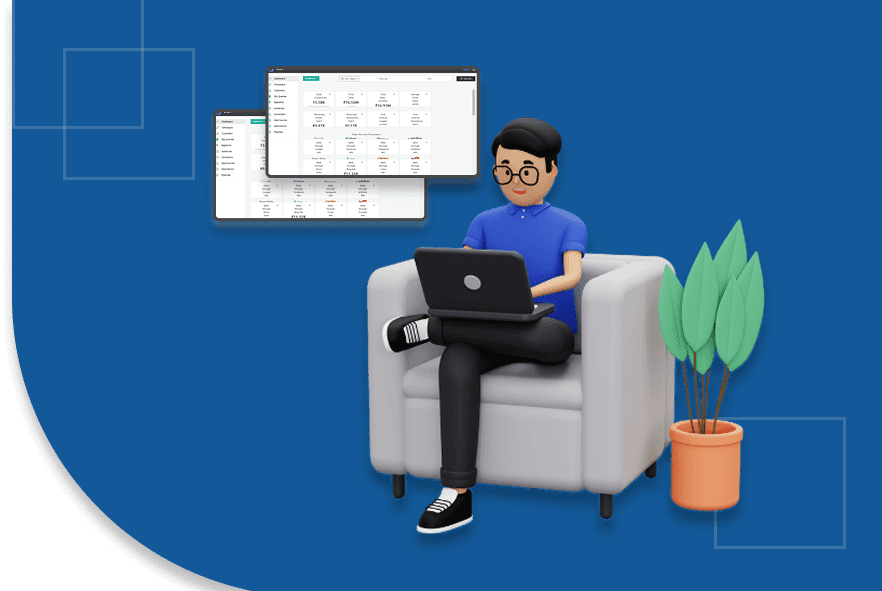Understanding Acquisition: Meaning, Types, and Examples
What is the cost of acquiring a new customer?
In the U.S., businesses are spending more than ever to attract new customers. For instance, T-Mobile's recent success in gaining over 900,000 new subscribers in a single quarter was driven by strategic promotions and premium offerings. Similarly, AT&T's bundling of 5G and fiber plans led to the addition of 482,000 new wireless subscribers in just three months.
However, these customer acquisition efforts come at a significant cost. Acquiring a new customer can be five to seven times more expensive than retaining an existing one. This highlights the importance of not only attracting new customers but also ensuring they remain loyal to your brand.
This blog delves into the meaning of customer acquisition, explores various strategies to attract and retain customers, and provides real-world examples to illustrate these approaches.
TL;DR
- Customer Acquisition: Attracting and retaining customers is crucial for business growth. Track metrics like CAC and LTV to optimize spending and revenue.
- Acquisition Types: Strategies include Horizontal (diverse markets) and Vertical (industry-specific), along with organic and paid approaches.
- Effective Strategies: Use Inbound Marketing, Outbound Marketing, and Referral Programs to engage and convert leads efficiently.
- Measuring Success: Monitor Conversion Rate and ROI to assess performance; overcome challenges like high CAC and low conversions with data-driven insights.
What is Customer Acquisition?
Customer acquisition refers to the process of attracting new customers to your business. It encompasses a range of activities designed to bring in potential customers, encourage them to purchase, and retain them for long-term loyalty.
For any business, understanding the cost and strategies involved in acquiring customers is essential to scaling and sustaining growth.
Key Metrics to Track:
- Customer Acquisition Cost (CAC): This metric measures the total cost incurred to acquire a new customer. It includes marketing, sales, and advertising expenses.
- Customer Lifetime Value (LTV): The total revenue a customer generates during their relationship with your business. Knowing this helps you balance your spending on customer acquisition with the potential revenue from each client.
Optimizing both CAC and LTV is critical to building a profitable and scalable business.
Next, we'll break down the essential metrics you need to monitor and why they matter in tracking the success of your customer acquisition efforts.
Types of Customer Acquisition

Customer acquisition strategies can be classified into different types, each with its own approach and benefits. Understanding these types is crucial to choosing the right acquisition strategy that aligns with your business model and goals.
Here are the main types of customer acquisition you should know:
1. Horizontal Acquisition
Horizontal acquisition involves targeting customers from different industries or markets. This strategy is beneficial when a business wants to expand its reach and diversify its customer base without focusing on a niche.
Example: A SaaS company offering project management software might expand horizontally by marketing its product to industries like healthcare, education, and retail.
2. Vertical Acquisition
Vertical acquisition, on the other hand, targets customers within a specific niche or industry. This approach helps businesses specialize and become experts in a particular sector, often resulting in stronger customer relationships and more targeted marketing.
Example: A business that provides cloud storage services tailored for the healthcare sector would be practicing vertical acquisition.
3. Organic Acquisition
Organic acquisition involves attracting customers without directly paying for advertising. Instead, businesses focus on strategies such as search engine optimization (SEO), content marketing, and social media to attract potential customers naturally.
Example: A blog that offers valuable content on digital marketing might acquire new customers through SEO and organic content distribution, turning readers into clients.
4. Paid Acquisition
Paid acquisition involves using paid media to attract new customers. This includes methods such as pay-per-click (PPC) campaigns, social media ads, and display ads, where businesses pay for ad placement to drive traffic and conversions.
Example: A clothing brand could run a targeted Facebook or Instagram ad campaign to acquire new customers by promoting discounts and product features.
Now, let's review some practical acquisition strategies that companies use to attract new customers and retain them as loyal customers.
Also read: Introduction to Importance of Server-Side Tagging and Tracking
Customer Acquisition Strategies

To ensure success in customer acquisition, it’s essential to implement effective strategies that are tailored to your audience and goals. Here, we’ll explore various approaches that businesses use to acquire customers, and within each strategy, we’ll look at specific tactics you can adopt for better results.
Here are some tried-and-true customer acquisition strategies with specific tactics you can implement:
1. Inbound Marketing
Inbound marketing focuses on creating content and experiences that draw customers in. It emphasizes engaging potential customers by providing valuable content that addresses their needs and problems.
- Content Creation:
- Develop valuable blog posts, eBooks, and whitepapers that answer common questions and provide actionable insights.
- Create interactive content like quizzes or calculators that help users solve specific problems related to your business.
- SEO Optimization:
- Conduct keyword research to find high-traffic, low-competition keywords relevant to your audience.
- Optimize your website’s technical SEO by improving page speed, mobile responsiveness, and proper use of meta tags.
- Use Web Tagging from Ingest IQ to track content engagement and optimize SEO by analyzing which pieces drive the most inbound traffic and conversions
- Social Media Engagement:
- Post regularly on platforms like Facebook, Instagram, LinkedIn, and Twitter to engage with your audience and share useful content.
- Use live streams, polls, or Q&A sessions to interact directly with your followers and answer their questions in real time.
2. Outbound Marketing
Outbound marketing involves actively reaching out to potential customers through various channels. This method can help businesses directly target their ideal customer and engage them with personalized offers.
- Cold Emails:
- Personalize each cold email with the recipient's name, company, and specific pain points that your solution can solve.
- Include a clear call-to-action (CTA) and offer value in the first few lines to hook the reader.
- Telemarketing:
- Have a script that highlights key product benefits and addresses common objections.
- Track each call’s success rate and optimize the script based on feedback.
- Paid Ads:
- Run paid campaigns across Google Ads, Facebook, or LinkedIn targeting specific demographics and interests.
- Continuously analyze the ad performance and adjust bids, targeting, and creatives to improve ROI.
3. Content Marketing
Content marketing is one of the most effective ways to attract and engage customers over time. By providing useful and informative content, you build trust and position your brand as a leader in your field.
- Educational Videos:
- Create explainer videos that demonstrate how your product works, and how it solves specific customer pain points.
- Develop customer testimonial videos to build trust and show real-world applications of your product.
- Podcasts:
- Launch a podcast series where you interview industry experts and discuss trending topics in your field.
- Include episodes on customer success stories or case studies that showcase how your product helped clients achieve their goals.
- Infographics:
- Design visually appealing infographics that summarize complex information into digestible visual content.
- Use infographics to highlight statistics or benefits that are relevant to your target audience’s needs.
Utilize Ingest Labs' Tag Monitoring and Alerts to ensure all content tracking tags are firing correctly, so you never miss data on which content converts best.
4. Referral Programs
Referral programs are a great way to encourage your current customers to bring in new clients. When customers refer others, they often feel more connected to your brand, and the new customer comes with a higher level of trust.
- Referral Discounts:
- Offer a discount to both the referrer and the referred when a successful referral is made.
- Make the discount tiered (e.g., higher discount for multiple referrals) to incentivize more sharing.
- Exclusive Offers:
- Provide access to exclusive products, features, or events for customers who refer others.
- Run limited-time referral programs with a sense of urgency to encourage immediate action.
- Loyalty Rewards:
- Set up a points-based rewards system where customers earn points for referring friends and can redeem them for services or discounts.
- Create an online dashboard for customers to track their points and referrals, enhancing engagement.
Implement Ingest ID to accurately track referral sources and customer journeys across devices, ensuring proper attribution and reward distribution
5. Email Campaigns
Email marketing is an excellent strategy for nurturing leads and converting them into customers. By sending targeted, personalized emails, you can build stronger relationships with potential clients.
- Drip Campaigns:
- Design a sequence of emails that guides the prospect through the sales funnel, starting from awareness, then moving to consideration, and finally, the decision stage.
- Use segmentation to send the right message to the right audience based on their behavior or actions (e.g., abandoning a shopping cart).
- Newsletters:
- Include industry news, product updates, and helpful content in your newsletters to keep your audience engaged and informed.
- Offer exclusive discounts or early access to products for subscribers to encourage sign-ups and build loyalty.
- Personalized Offers:
- Use behavioral data (like browsing history or past purchases) to send personalized offers that align with the customer’s needs.
- Send reminder emails for products left in the cart or follow up with leads who haven’t interacted in a while.
6. Partnerships and Collaborations
Collaborating with other businesses or influencers can give you access to new customer bases and provide credibility through association. Partnerships allow you to expand your reach while offering something valuable to your audience.
- Influencer Partnerships:
- Identify influencers in your industry whose followers match your target audience and collaborate with them to promote your products.
- Offer influencers free products or services in exchange for reviews or mentions on their social platforms.
- Co-Branding Opportunities:
- Work with complementary businesses to create joint products or services that appeal to both companies’ customer bases.
- Offer bundled deals that combine products from both brands at a discounted price, giving customers more value.
- Cross-Promotions:
- Collaborate with businesses targeting similar customer segments but not in direct competition, and promote each other's services to your respective audiences.
- Create joint content, such as webinars, blog posts, or eBooks, to showcase both businesses and provide educational value to the audience.
Track partnership campaign performance using Event IQ for granular event analytics and unified reporting.
7. Data-Driven Decision Making
By analyzing customer data, you can make more informed decisions about how to target, engage, and convert leads. Understanding your customers' preferences and behavior helps to tailor your approach.
- Customer Segmentation:
- Divide your customer base into different segments based on demographics, behavior, or engagement to create personalized marketing campaigns.
- Use data to identify high-value customers and prioritize marketing efforts toward acquiring similar leads.
- A/B Testing:
- Continuously test variations of landing pages, email subject lines, and ads to determine what works best with your audience.
- Use A/B test results to optimize content and messaging, leading to higher engagement and conversion rates.
- Behavioral Analytics:
- Use tools like Ingest Labs’ server-side platform with real-time monitoring, data governance, 100+ integrations, including Google Analytics 4, to track visitors, visualize journeys, and find optimization opportunities, all while ensuring privacy and data ownership.
- Implement insights from behavioral analytics to optimize your sales funnel, reduce bounce rates, and improve conversion paths.
Adopt the Unified Customer View from Event IQ to consolidate data across channels, enabling precise segmentation and campaign refinement.
We'll now take a look at real-world examples of companies that are leading the way in customer acquisition and how their strategies can be applied to your business.
Examples of Successful Customer Acquisition
Understanding how other businesses effectively acquire customers can provide valuable insights. Here are a few examples of successful customer acquisition in different industries:
- E-commerce Example:Amazon is a prime example of a company that excels in customer acquisition. Through personalized recommendations, aggressive advertising, and loyalty programs like Amazon Prime, Amazon continuously attracts and retains customers. Their ability to use data effectively allows them to drive conversions by anticipating customer needs and preferences.
- SaaS Example:HubSpot’s customer acquisition strategy revolves around inbound marketing. By offering free resources, such as blog posts, eBooks, and webinars, HubSpot captures leads and nurtures them into paying customers. Their emphasis on content marketing and automation tools makes them an industry leader in customer acquisition for SaaS companies.
- Service-Based Example:A local service provider, such as a plumbing company, can grow its customer base by leveraging referral programs and a strong Google My Business presence. Positive reviews and word-of-mouth referrals encourage potential customers to reach out when they need services.
Next, we'll explore how you can measure the success of your own acquisition efforts, ensuring you're not just attracting customers but also turning those efforts into meaningful growth.
Also Read: Understanding and Optimizing Conversion Funnels in Digital Marketing
Measuring Success in Customer Acquisition
To gage the effectiveness of your customer acquisition efforts, you need to measure key metrics:
- Customer Acquisition Cost (CAC): Helps determine how much you are spending to acquire each customer.
- Customer Lifetime Value (LTV): Indicates the long-term revenue a customer is likely to bring, allowing you to balance your CAC.
- Conversion Rate: The percentage of leads that convert into paying customers.
- Return on Investment (ROI): Tracks the overall profitability of your acquisition strategies.
Using tools like Google Analytics, HubSpot, and others, you can track these metrics to optimize your customer acquisition strategy. In the next section, we’ll explore common hurdles that many businesses face in customer acquisition and guide how to overcome them.
Common Challenges in Customer Acquisition

Acquiring new customers is not without its challenges. Many businesses face obstacles like high acquisition costs or low conversion rates. Addressing these challenges is crucial to optimizing your acquisition strategies.
1. High Customer Acquisition Costs (CAC)
If your CAC is too high, it can significantly affect your profitability. To manage CAC, you need to refine your targeting, optimize your campaigns, and ensure your marketing efforts are focused on high-converting leads.
2. Low Conversion Rates
Poor conversion rates can result from a range of factors, including ineffective messaging, unclear calls to action, or a lack of trust in your brand. Optimizing the customer journey and addressing these issues is key to boosting conversions.
3. Inadequate Targeting
Reaching the right audience is vital for acquisition success. If your campaigns aren’t targeting the right prospects, you risk wasting resources. Refine customer segmentation and utilize data to focus your efforts on high-potential leads.
4. Customer Retention vs. Acquisition
While acquiring new customers is important, focusing too much on acquisition and neglecting retention can hurt long-term growth. It's important to balance acquisition with strategies that nurture existing customers and reduce churn.
5. Unclear Value Proposition
An unclear or weak value proposition makes it difficult to convince prospects to buy. Clearly communicate what sets your product apart, highlighting its benefits and how it solves customer problems effectively.
6. Ineffective Messaging
Messaging that doesn’t speak directly to customer pain points can lead to poor engagement. Craft personalized, targeted messaging that resonates with your audience, and test different approaches to see what works best.
7. Inability to Scale Acquisition Efforts
As your business grows, scaling acquisition efforts can become more complex. To overcome this, automate processes, optimize campaigns for better performance, and regularly test new strategies to find scalable solutions.
Ingest Labs addresses these pain points by providing advanced visitor journey tracking, real-time data analysis, and automated customer segmentation through Ingest IQ, along with its Web Tagging and Data Streaming features.
This enables you to identify high-value leads, optimize campaigns, and reduce churn by acting on actionable insights, with over 100 pre-built integrations. This includes Meta CAPI and Google Analytics 4, plus comprehensive dashboards and reporting tools.
Final Thoughts
Customer acquisition is a dynamic process involving attracting, converting, and retaining customers. Understanding acquisition types, using effective strategies, and tracking metrics helps businesses grow. Choosing the right strategy is crucial for long-term success. Implement and tailor these strategies to your audience to see results.
Ingest Labs provides advanced solutions to tackle these challenges head-on. With tools like Ingest IQ for server-side tracking, Ingest ID for identity resolution, and Event IQ for advanced event tracking and analytics, businesses can gain deeper insights into customer behavior while ensuring privacy compliance. These tools help optimize marketing campaigns, improve conversion rates, and reduce data collection costs, all while providing seamless integration and real-time reporting. Ingest Labs empowers businesses to acquire, engage, and retain customers with precision and efficiency.
Request a personalized demo today to see how our powerful tools can help you streamline data collection, improve customer insights, and drive growth!
FAQ
1. What is customer acquisition?
Customer acquisition refers to the process of attracting and converting new customers to your business through various marketing and sales strategies
2. What are the key metrics for measuring customer acquisition success?
Key metrics include Customer Acquisition Cost (CAC), Customer Lifetime Value (LTV), Conversion Rate, and Return on Investment (ROI).
3. How can I reduce my customer acquisition cost?
Optimize your targeting, improve your messaging, focus on high-converting channels, and enhance your content and referral programs to reduce CAC.
4. What is the difference between horizontal and vertical acquisition?
Horizontal acquisition targets customers from different industries, while vertical acquisition focuses on a specific niche or industry for more specialized marketing.
5. Why is customer retention important for acquisition?
Customer retention ensures long-term growth by reducing churn, increasing customer loyalty, and maximizing the lifetime value of existing customers, making it more cost-effective than continuously acquiring new ones.






